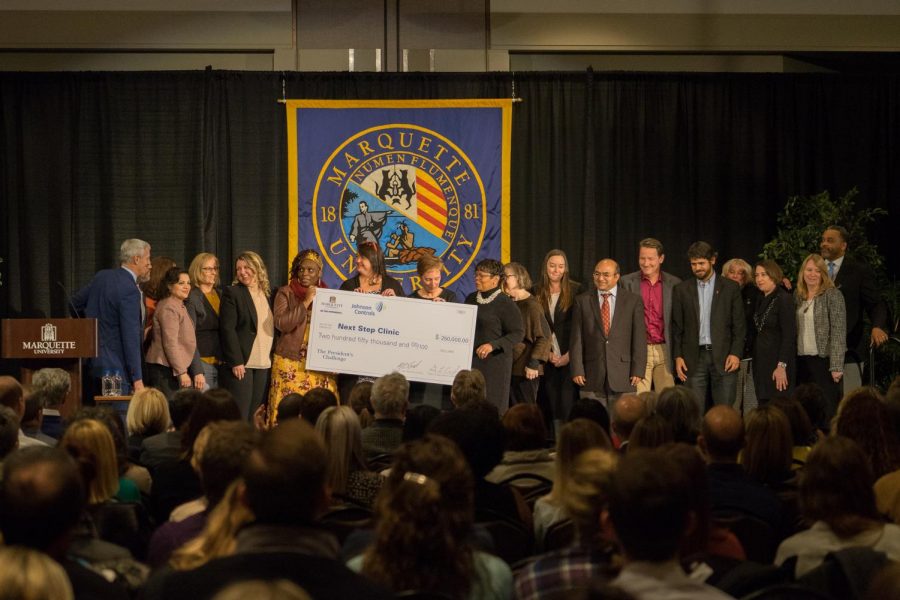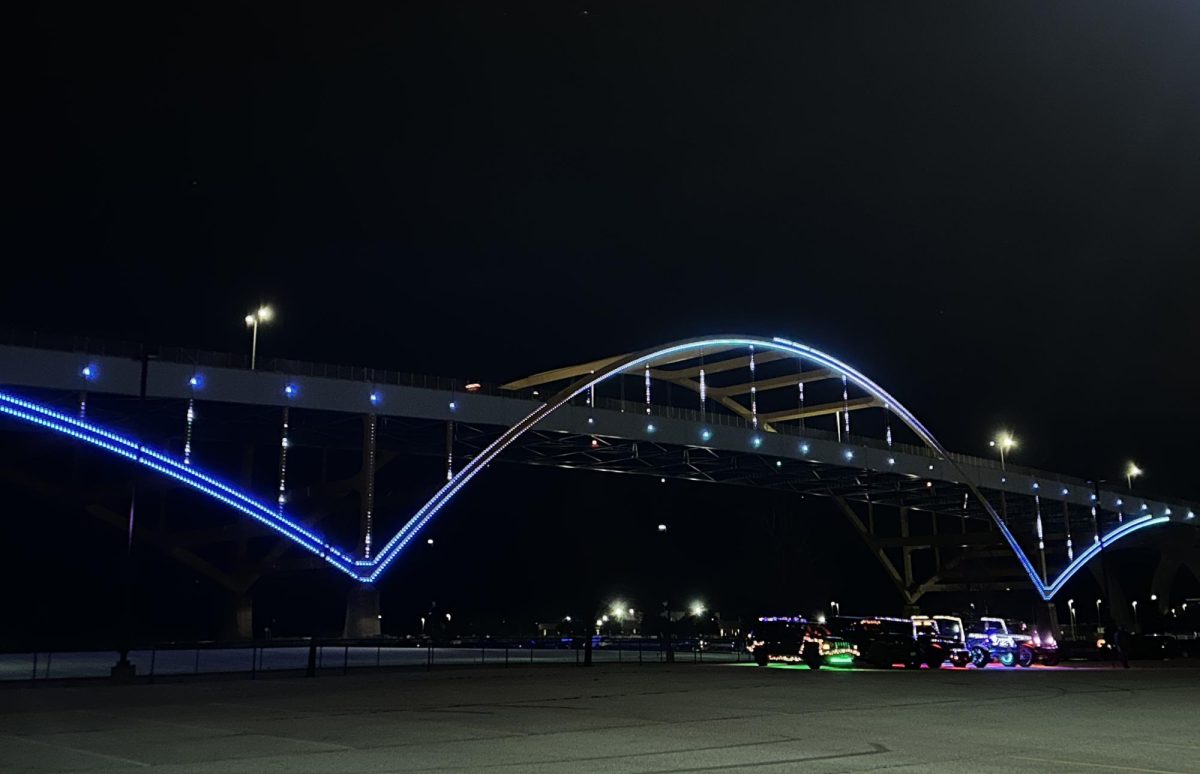Milwaukee’s skyline will change in the years to come.
That is, change colors.
The Light the Hoan project, a crowdfunding campaign to illuminate the Hoan Bridge with light bulbs, hopes to raise enough funds to light the bridge by summer 2020.
The Hoan Bridge, often noticed for its yellow arch, connects Interstate 794 to Lake Freeway across part of the Milwaukee River.
“We have a lot of really great things happening here, and the bridge is a metaphor in a way to show how we can make those connections,” Michael Hostad, co-founder of Light the Hoan, says.
For $25, community members can purchase a bulb online. Bulbs can be dedicated to people or organizations, or they can just be acts of kindness that are making a positive impact in Milwaukee. Donations on the website can be made for up to $500.
Light the Hoan currently has between $350,000 and $400,000 saved for the project, Hostad says. To begin manufacturing the lights and get engineering work done, Hostad says the project needs at least $1.8 million from community donors.
In total, the project will cost between $4.5 and $5 million, which will include electric and maintenance costs for a decade. To cover costs not funded by community members, Hostad says the Hoan group members are meeting with corporate and philanthropic donors, looking to secure larger donations.
“We’d like to finish all of our fundraising for this year and have those lights up ideally in time for the Democratic National Convention, if we end up getting that here in Milwaukee,” Hostad says.
Once the lights are up, advanced technology will allow the colors to change or be synced to music.
Hostad says project members are working with the Department of Transportation to be conscious of safety concerns. Distracted drivers, migrating birds and other risks exist.
With safety accounted for, Hostad says he wants the bridge to be “the temperature of Milwaukee at any given moment.” The bridge’s lights and patterns could coordinate with important moments or organizations in the city.
Some possibilities include lighting the bridge pink for breast cancer awareness, gold for pediatric cancer awareness, Brewers colors during home runs or the colors of local business sponsors, Hostad says.
Hostad says he reached out to 88Nine Radio Milwaukee about syncing the lights with local artists’ performances. He plans to explore opportunities with Summerfest, too.
“People can tune in and watch the bridge lights move in coordination with the music,” Hostad says.
Behind the scenes, young individuals part of Islands of Brilliance, a Milwaukee-based nonprofit organization that provides project-based learning opportunities to children and young adults with autism, will be gaining coding and programming skills, controlling the bridge’s functions from a digital immersion laboratory at the University of Wisconsin-Milwaukee.
Individuals aged 14 to 26 will learn to build and code a virtual environment of the bridge. Then they will learn to code and program the bridge’s lights to respond to music, change colors and have movement.
Mark Fairbanks, executive director of Islands of Brilliance, says 10 individuals on the autism spectrum with high aptitudes for coding were selected to be part of the project.
The organization provides other opportunities in design, 3D modeling, STEM and art for individuals on the spectrum, but Fairbanks says Light the Hoan is unique.
“More often than not, we’ve had individual projects and solo projects working with a mentor,” Fairbanks says. “So this actually takes the collaborative team process.”
The individuals selected began working in the digital immersion lab over the summer to become familiar with the equipment and virtual environment. The virtual bridge build will start in June, Fairbanks says.
Hostad says Philips Lighting, the company creating the lights for the Hoan Bridge, expressed interest in hiring some individuals from Islands of Brilliance. The individuals would be given opportunities to light up other monuments, including the Empire State building, the London Eye and the Oakland Bay Bridge, the last of which is located in San Francisco.
“These kids in Milwaukee can end up having the skills to light up landmarks around the world,” Hostad says.
Fairbanks hopes the project can combat underemployment rates for individuals with autism.
“We’re talking about taking candidates who may not have been employed and teaching them, how do you fit on a team and how do you collaborate?” Fairbanks says. “The reward, I think, is we’re tantalizingly close to having candidates who are going to be employed.”
This project has the ability to serve as a model for others who want to teach STEM-based skills to individuals on the autism spectrum, Fairbanks says.
He says the work he does is purposeful, but Fairbanks doesn’t get caught up in his organization’s impact. He’s “too busy still climbing the mountain.”
“If what we’re doing with this project happens in other communities across the country, then we can say that Milwaukee is exporting some really cool opportunities that we can be known for, and that’s really exciting,” Fairbanks says.





